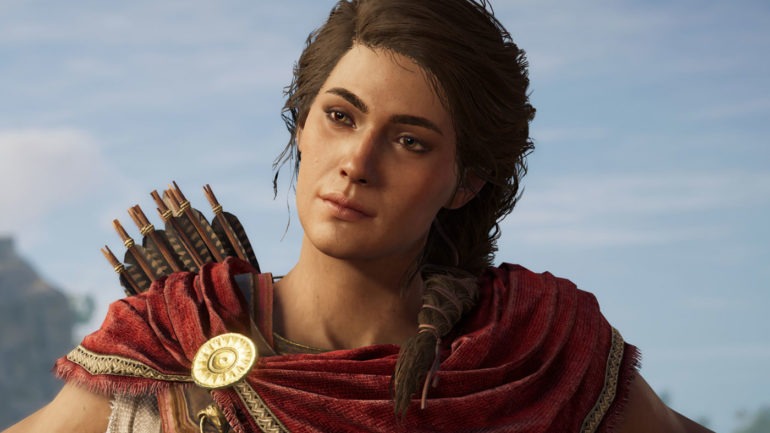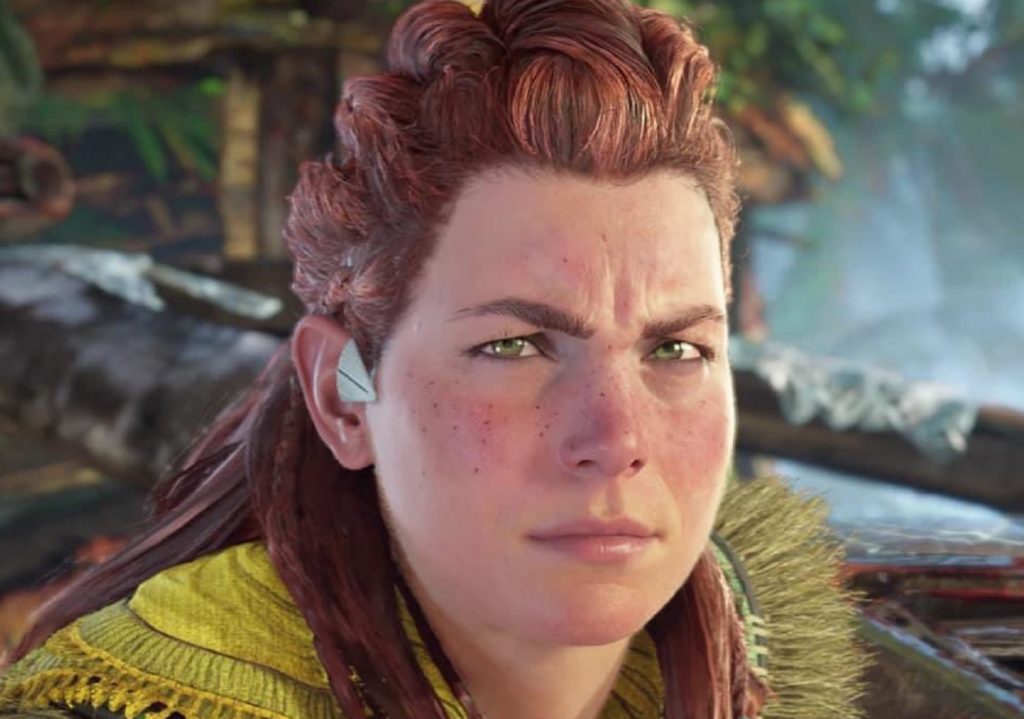During the recent State of Play broadcast, Sony premiered the gameplay trailer for Horizon Forbidden West, the highly anticipated follow-up to 2017’s Horizon Zero Dawn, made by Guerrilla Games. Critically acclaimed, Horizon Zero Dawn is a unique game set in a world overrun by prehistoric machines, but it was the female protagonist, Aloy, who won over fans.
A hunter in a dystopian world, Aloy has a slim, fit build and is modelled on Danish actress Hannah Hoekstra. In the snippets of Horizon Forbidden West, Guerrilla Games debuted a slightly older Aloy with a more muscular frame.
Alterations to Aloy’s design divided fans immediately. Some suggested Aloy should maintain a ‘feminine and attractive’ aesthetic while others asserted the muscle mass was realistic as, after all, she’s spent years surviving in a post-apocalyptic world. Aloy’s new design represents a growing trend of athletic and muscular female protagonists in games – a stark contrast from an industry that has sexualised female protagonists for decades.
Sony reports that almost half of Play Station gamers are women, and fifty percent of women in Asia play video games. In the late 2000s, studies explored the link between video game characters and men’s body image. The studies found men experienced lower body confidence after playing with unrealistic male characters. While no studies have focused on women, it suggests that women who play with female characters with exaggerated bodies may experience similar concerns.
Lara Croft may have inspired more female characters, but she was created for the male gaze. Once a buxom babe, 2015’s Rise of the Tomb Raider debuted a more athletic Lara. Her skills closely resembled an expert CrossFit and her physique felt attainable; I had seen bodies like Lara’s in at my gym. For the first time, playing as Lara Croft felt relatable. Subconsciously, this affected into my lifestyle. I worked out more and ended up joining a bootcamp, where my personal trainer encouraged me to push myself further.
Despite the increasing percentage of female gamers, female-led games have always been a hard sell. In the last five years, only six percent of games featured a single female protagonist. Fifty-two percent of games between 2015 and 2020 offer dual female-male protagonists. In these games, players can choose to play as a male or female or are required to take control of a female character to complete an aspect of the game.
In recent years, one of the best games to offer dual protagonists is 2018’s Assassin’s Creed: Odyssey. Players choose to play as Kassandra or Alexios, siblings from Sparta. As Ubisoft’s canonical choice, Kassandra’s character is compassionate, beautifully voice-acted, fit and statuesque.
Approximately, one third of players choose Kassandra over her brother. While this may seem low, it’s a huge improvement for a series that focused on male leads for over a decade. Arguably, with almost a thousand fan works inspired by Kassandra, she has more longevity than her male counterpart and affirming that we don’t need to create games for women to play; we need to create games women see themselves in. If not for gender equity, then for better games with more mass-market appeal.

2020’s The Last of Us: Part II is one of the only games to have women in both leads. As the antagonist, Abby was a tough sell to players, but it was her body – which was based on professional athlete Collen Fostch – that became a point of contention when players argued that Abby was ‘too unrealistic’ to be enjoyable to play. It was a poorly disguised attempt to assert that only slim women had a place in video games, and a slap in the face to muscular women who are often told they’re too ‘manly’.
Muscular and slim are the two extremes when it comes to body shape in female characters – there are few plus-sized characters and when they are represented, they’re often the antagonists.
The female experience has often been minimised and overlooked. But there is progress in the way we are seeing women represented as diverse, realistic characters with strong storylines and there is growing evidence to support their appeal to fans of both genders. With almost fifty percent of gamers identifying as women, video game developers must create more diverse games, and if it’s not to improve their game then at least to capitalise on a rapidly changing market.

